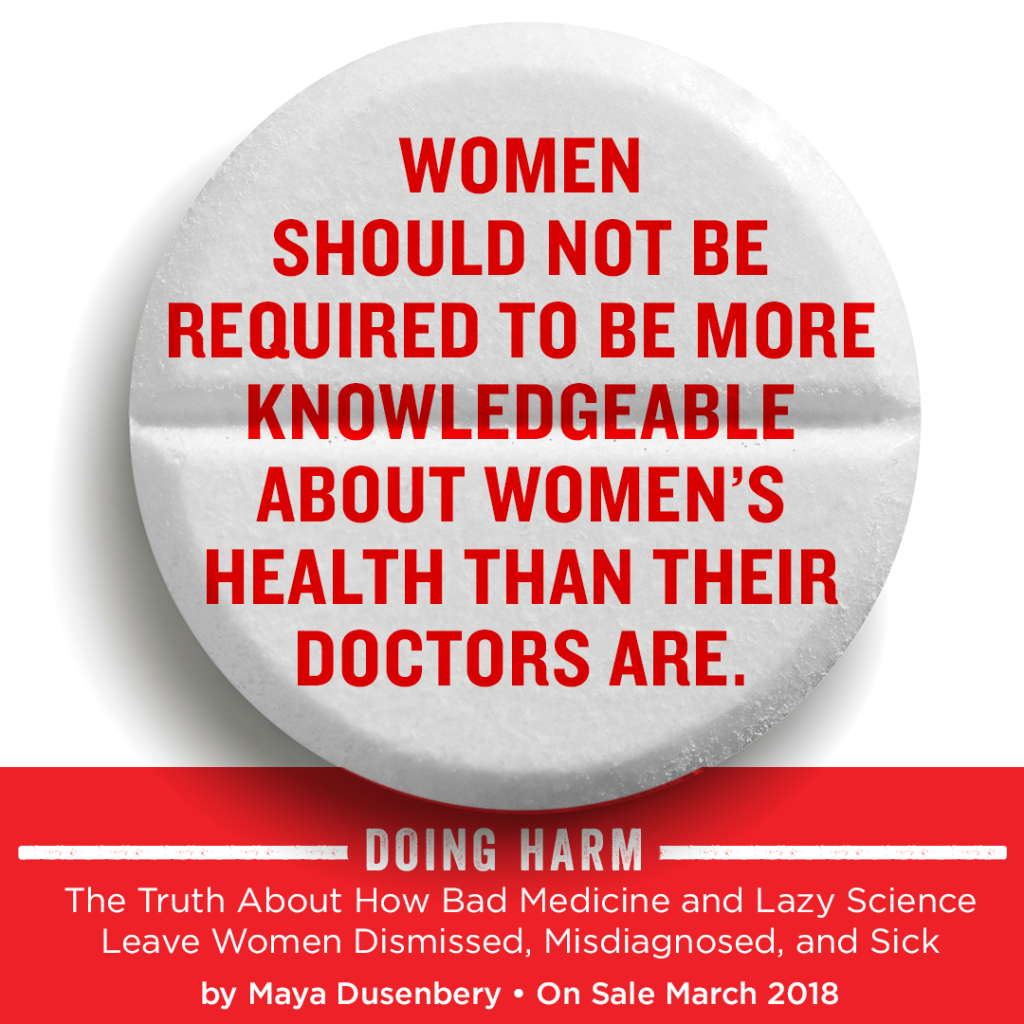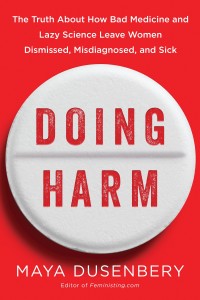Author Maya Dusenbery spent the last few years researching the state of women’s health care for her new book, Doing Harm: The Truth About How Bad Medicine and Lazy Science Leave Women Dismissed, Misdiagnosed, and Sick. Maya interviewed patients, doctors, researchers and non-profit leaders to carefully document the female patient experience, including Dysautonomia International Co-Founder and President, Lauren Stiles. The book provides the first comprehensive look at how sexism in medicine harms women in our current era.
Maya reviews the history of several female predominant medical conditions, including POTS. She traces its roots from its initial description as DaCosta’s syndrome or Soldier’s Heart, considered by most doctors at the time to be an organic condition in male soldiers, to later descriptions attributing these symptoms to psychogenic origins once it was recognized that it was much more common in women, to the modern understanding of POTS and current research identifying an autoimmune mechanism in many POTS patients.
The text below is an excerpt from the book.
The organization [Dysautonomia International] is also helping push forward research on the condition. Way back in the early nineties, when Mayo Clinic researchers defined the syndrome, they suggested it might be immune related since many patients developed it after an infection. There’s other circumstantial evidence that hints at a possible autoimmune basis: the fact that it’s more common among women, that it runs in families, and that patients often develop other autoimmune diseases. (Though, like other unexplained conditions, “POTS likely has many different mechanisms, from inherited genetic traits, to immunological abnormailities, to structural neuropathies,” Stiles says.) The autoimmune hypothesis remained unexplored for decades, largely because the condition receives little funding. “Assuming POTS impacts the more conservative estimate of 1 million patients, it’s getting 1 million dollars a year at NIH; MS impacts 400,000 patients and gets over 100 million dollars a year,” Stiles says.
In the last few years, though, multiple research teams have come out with small studies showing that many POTS patients have autoantibodies to the adrenergic and muscarinic receptors, which are critical parts of the autonomic nervous system. Dysautonomia International decided to help speed along the scientific process by raising money to fund larger follow-up studies and literally bringing researchers to the patients. “We went to them and said, ‘we have this annual conference in DC every year; do you want to come to the conference and collect serum from a hundred patients?” At the last few conferences, several research teams took them up on the offer. In 2018, Dysautonomia International will distribute at least $300,000 in research grants, almost a third of the sum that the NIH, the largest public funder of scientific research in the world, can muster for research on the condition.
Of course, even before a formal advocacy organization like Dysautonomia International was formed, informal online patient communities had radically changed the POTS experience. When a prominent neurologist finally confirmed Stiles’s diagnosis, he warned that she would likely never meet another patient with it or find a doctor who knew how to treat it. Instead, to her relief, by the end of the day, she’d found an online support group with 3,000 members ready to share their advice and doctor recommendations. In fact, she credits online patient communities for everything: “I diagnosed myself through the Internet, I found other patients I needed for support through the Internet. And so, so often we meet patients who were diagnosed first by their friend – their girlfriend from dance class or whatever – and then found a doctor because of a recommendation they got from an online support group. Thank God for the Internet.”
Thank God, indeed. But this is not how it should be. We deserve better than a medical system in which an extremely debilitating and common condition remains so unknown more than two decades after it was first described (or 150 years, depending on when you start counting) that patients have to do everything themselves – from diagnosing each other to teaching their own doctors about it to funding the scientific research that’s so desperately needed to explain it and cure it.
This an excerpt from Doing Harm: The Truth About How Bad Medicine and Lazy Science Leave Women Dismissed, Misdiagnosed, and Sick. Copyright © 2018 by Maya Dusenbery. Published by HarperOne, an imprint of HarperCollins Publishers.

